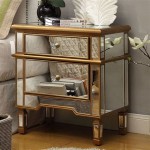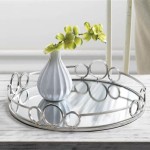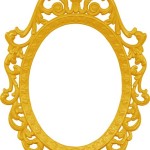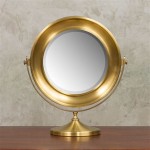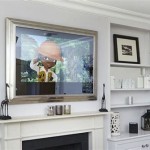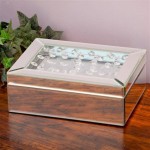Do You Need to Secure a Floor Mirror?
Floor mirrors, with their ability to enhance space and reflect light, have become integral to many homes and businesses. However, their size and weight present potential safety hazards, especially in households with children and pets. This raises a crucial question: is securing a floor mirror necessary? The answer, while not universally straightforward, hinges on several factors, including the mirror's design, its placement, and the specific environment.
Mirror Design and Construction
The design and construction of a floor mirror play a significant role in determining its stability and, consequently, the need for securing it. Lightweight mirrors with thin frames are inherently less stable than those with heavier, broader bases. Similarly, mirrors with a high center of gravity are more prone to tipping. Examining the mirror's construction for inherent stability features, such as robust backing and a wide, stable base, is the first step in assessing the potential risk.
Mirrors specifically designed for leaning against a wall generally possess features that enhance their stability in that position. These may include non-slip backing or strategically placed feet. However, even with these features, external factors such as accidental bumps or vibrations can still cause these mirrors to topple. It's crucial to consider these potential scenarios when deciding whether added security measures are necessary.
Environmental Factors and Placement
The environment in which the mirror is placed significantly influences the need for security. High-traffic areas, rooms frequented by children or pets, and locations prone to vibrations (such as near doorways or in older buildings) present a greater risk of accidental impact. In these situations, securing the mirror becomes a paramount safety precaution. Conversely, in low-traffic, adult-only environments, the risk is considerably lower, although not entirely eliminated.
The specific placement of the mirror within a room also contributes to the overall safety profile. Placing a leaning mirror on a soft, uneven surface like a rug increases the likelihood of instability. Even on a hard surface, slight irregularities or slopes can compromise the mirror's balance. Positioning the mirror near furniture or other objects that could be climbed or used as leverage further increases the risk of tipping, particularly for children.
Securing Methods and Best Practices
Various methods exist for securing floor mirrors, each with its own benefits and drawbacks. Wall anchors, brackets, and straps provide robust solutions for securing the mirror directly to the wall. These methods effectively prevent tipping and offer the highest level of security, especially for larger, heavier mirrors. Adhesive anti-tip straps and furniture anchors provide less permanent solutions for anchoring the mirror to the wall or to heavy furniture. These are generally easier to install and remove but may offer slightly less resistance to strong forces.
When selecting a securing method, consider the mirror's weight, size, and the wall material. Ensure that the chosen method is appropriate for both the mirror and the wall to avoid damage and ensure optimal security. Following the manufacturer's instructions for installation is crucial for achieving the intended level of protection.
Assessing the Specific Need
The decision to secure a floor mirror is ultimately a matter of balancing the perceived risk with the effort required for implementation. While not all situations demand securing a mirror, erring on the side of caution, especially in environments with children or pets, is always advisable. A thorough assessment of the mirror's design, its placement, and the surrounding environment will provide the necessary information to make an informed decision regarding the necessity of securing the mirror.
Consider the potential consequences of the mirror falling. Larger, heavier mirrors pose a greater risk of injury and property damage than smaller, lighter ones. Evaluating the potential impact helps prioritize safety and guides the decision-making process. Ultimately, taking proactive measures to secure a floor mirror contributes to a safer environment and offers peace of mind.
Regularly inspecting the mirror and its securing mechanisms is crucial for maintaining its stability over time. Check for any signs of wear and tear, loose screws, or weakened adhesives. Promptly address any identified issues to ensure the continued effectiveness of the safety measures.

How To Secure A Heavy Leaning Floor Mirror The Wall Love Our Real Life

How To Secure A Heavy Leaning Floor Mirror The Wall Love Our Real Life

Need Ideas About How To Secure A Leaning Mirror Without Using S R Askdiy

How To Secure A Heavy Leaning Floor Mirror The Wall Love Our Real Life

Leaning Pictures And Mirrors The Easy Alternative To Hanging Art

How To Secure A Leaning Mirror Wall Hunker

How To Secure A Heavy Leaning Floor Mirror The Wall Dining Room Bedroom Decor

How To Secure A Heavy Leaning Floor Mirror The Wall Love Our Real Life

Seafuloy 31 5 In W X 71 H Large Rectangle Gold Alloy Framed Full Length Wall Mounted Standing Mirror Hz J Z015 The Home Depot

Beautypeak 71 X31 Full Length Mirror Rectangle Floor Mirrors For Standing Leaning Or Hanging Gold Com

